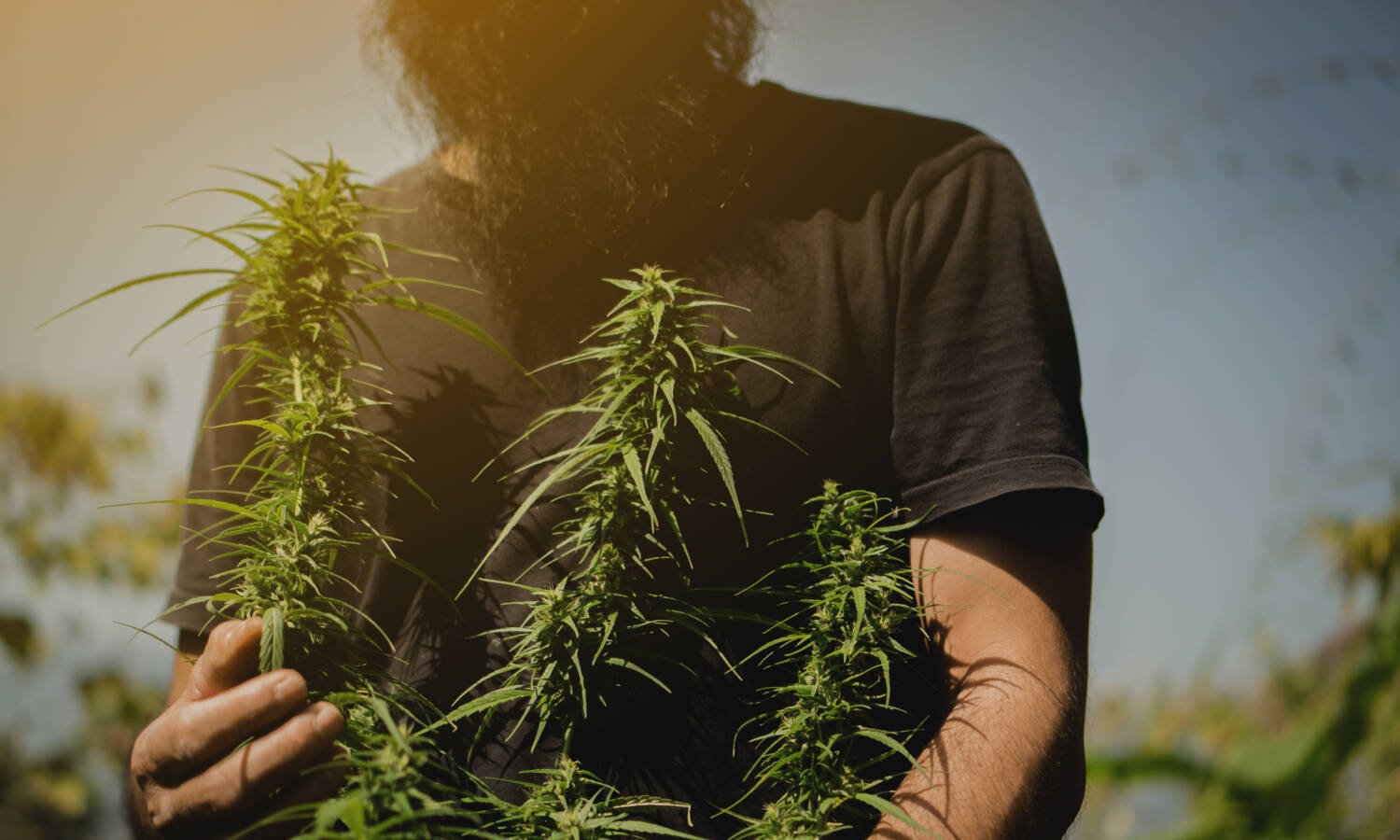
How the cannabis industry can start reducing its carbon footprint
Cannabis grew on its own for thousands of years without the help of humans or fossil fuels. Just as the plant is naturally eco-friendly, cannabis users are often eco-conscious citizens. You can see a taste of this in the often recycled or zero-waste packaging that some cannabis brands are now using.
Why is cannabis’ current carbon footprint so high and growing as the industry continues to expand? The answer to that question lies in the way marijuana is grown today.
Photo by Kirill Vasikev/EyeEm/Getty Images
We asked Heather Dunbar, director of marketing and communications at Sun+Earth Certified, some questions about the current state of marijuana’s carbon footprint and what needs to change to make it smaller. Sun+Earth-certified growers are all grown holistically, responsibly, and restoratively, according to the company’s website. In other words, the goal is to give back to the environment rather than detract from it.
We wanted to know how to curb or even reverse the current problems with marijuana cultivation and its use of fossil fuels. But as marijuana continues to grow as a major player in business and industry, is it possible to turn the tide and return to a climate-conscious way of growing cannabis? Or is it destined to continue to grow into a large consumer of fossil fuels?
Use the sun – it’s there and it’s free
Perhaps the most fundamental reason for this major shift in the use of fossil fuels in cannabis cultivation is how each plant gets its light. Ever since the plant emerged, cannabis has relied on the sun for its much-needed rays of light. Now, however, outdoor cultivation occurs in a small minority of marijuana growers. “Nationwide, 80% of cannabis is grown indoors with sophisticated lighting and environmental controls designed to maximize the yield of the plant,” it says Politically.
Instead of receiving natural light, companies are using indoor farming to reduce the number of variables, which helps produce a stronger yield of potent weed, but at the expense of finances and the environment. That’s why Sun+Earth Certified aims to use sunlight instead of electricity to fuel plants. “Not only are these methods good for the environment, they’re also good for the bank account,” Dunbar said. “Regenerative methods use natural sunlight and avoid the high cost of expensive energy bills that come with using high-intensity light.” Because as important as environmental concerns are, knowing about potential money savings is a great way to encourage change.
But it’s not easy to influence the big breeders who have built large indoor facilities that run like clockwork to produce crop after crop of dependable bud. But this methodological consequence has its price. “Large indoor grows require a massive amount of energy with high-intensity lights and HVAC systems running 24/7, which has a significant environmental impact and a huge carbon footprint,” Dunbar said.
 Photo by Lealnard Riengkaew/EyeEm/Getty Images
Photo by Lealnard Riengkaew/EyeEm/Getty Images
Use environmentally friendly pesticides and materials
Not only unregulated and man-made pesticides can be dangerous to our bodies like we used to be reported, but these toxic pesticides are also bad for the environment. “Pesticides and fertilizers based on synthetic petroleum have a major negative impact,” Dunbar said. “By reducing, or ideally eliminating, the use of these products, your carbon footprint is drastically reduced.”
RELATED: Does marijuana play with the environment?
Fertilizers are also an area of opportunity for marijuana growers to reduce their footprint. Not only is composting and making your own fertilizer cheaper, it means you don’t have to buy fertilizer that has traveled hundreds or thousands of miles on a truck. Some of the commercially available fertilizers can even have harmful effects on the environment and climate change. “Not only do petrochemical pesticides and fertilizers negatively disrupt soil biology, they also consume large amounts of fossil fuels,” explains Dunbar. That is why her company promotes the production of its own fertilizer. It helps save money and protect the environment.
Small and sustainable farms are a great way to reduce your carbon footprint
Dunbar and Sun+Earth Certified work closely with many smaller growers, and it is with these smaller growers that there is some hope for environmental stability. The concept is that these farms work together as a collective. “Growers are sharing best practices, joining forces, working together to bridge the farm-to-table divide, spread the message of regenerative cannabis growing and empower communities,” said Dunbar. She explains that the goal is for this low-waste, regenerative way of farming to spread to other growers who want to do the right thing but just don’t know how.
While this seems like a noble and optimistic plan, it’s clear that there is limited time to implement these changes, especially as small cannabis farms continue to struggle. “Farmers who have been doing the right thing for generations are finding it incredibly difficult to make ends meet. Currently there is no profit margin and some farmers are closing their shops,” Dunbar said.
RELATED: 4 ways cannabis is becoming a greener industry
Dunbar looks to her own state of California, where the power grids are already very stressed and congested. “If large industrial operations continue to produce record amounts of cannabis while consuming enormous amounts of energy, it will continue to strain the power grid,” she said.
The challenges of growing marijuana sustainably are very real, and they’re only getting tougher as more powerful corporations buy up growing operations. Still, in the end, the solution to such a huge carbon footprint problem is pretty simple. As Dunbar said, “It’s time to grow it in a way that’s consistent with nature and what makes sense for a sustainable and regenerative future: growing under the sun and growing in the ground.”

Post a comment: